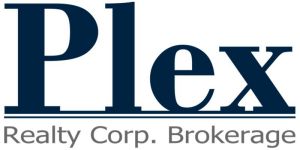Toronto Income Property Newsletter: February 2011
I’d like to welcome Howard Esakov back to the Plex team. Howard has years of experience with all kinds of plexes, commercial buildings and “flip” properties.
Numbers for the first two weeks of January showed an 11% decrease in sales from the same time last year. There is still an overall lack of duplex and triplex inventory in the Central core. If something hits the market that is decent, it will likely sell quite quickly and may see multiple offers. In this past week, I’ve noticed quite a few listing agents starting to “hold back” their offer dates. Some people think that the days of five caps are coming to an end. That’s quite a scary thought for me as I have always espoused the financial benefits of Toronto income properties. Yet we all have to live somewhere, so it is always good to contemplate living in an income property if you can.
I’d like to wish you all a Happy Valentine’s Day. Don’t forget to give your sweetie a big hug and a kiss on the 14th.
*
Last week, Federal Finance Minister Jim Flaherty announced three main changes to mortgage rules in order to combat concerns over high Canadian household debt. The maximum number of years the government will back a mortgage was lowered from 35 to 30. The upper limit that Canadians can borrow against their home equity was lowered to 85 per cent from 90 per cent. Thirdly, government insurance backing on home equity lines of credit, or HELOCs, has been removed.
The first change is likely to have the largest impact. Buyers who purchase a home with less than 20% of the value of the home are required to purchase government-backed mortgage insurance through Canada Mortgage and Housing Corporation (CMHC). Under the new rules, mortgages amortized over longer than 30 years will no longer qualify for that insurance, making it effectively impossible to get a highly leveraged mortgage of more than 30 years in Canada. Flaherty is simply lowering the amount that can be borrowed against home equity to 85% to ensure Canadians retain some equity in their homes. The final change, to remove government insurance on HELOCs, came as a result of Ottawa’s concern that certain financial institutions were allowing homeowners to roll too many consumer purchases into CMHC-insured mortgages.
While Flaherty called the changes “moderate,” they did not include an increase to the 5% minimum down payment Ottawa requires for a home purchase. They also stopped short of a proposal that surfaced last week which would have required 100% of condo fees to be included in the list of expenses that are measured against income when financial firms are considering a mortgage candidate. Currently, only 50% must be included.
The changes also come following recent warnings from the Bank of Canada on household debt levels. In December, Bank of Canada Governor Mark Carney cautioned Canadian households and businesses not to be lulled by current low interest rates, because repercussions from a hike could be swift. Flaherty’s announcement is the second time in three years that the government has clamped down on mortgage rules.
This is why we continue to advocate buying income-generating properties as a means of lessening the costs of home ownership. When (not if) the interest rates rise, many of our buyers will be somewhat buffered by their income streams. Even if it is simply a basement apartment, any revenue that can be generated from the property you live in will be advantageous to your cash flow and overall indebtedness over the long term.
*
We always recommend to our buyers to get tenant legal liability insurance for your income property purchase. There are certain occasions where a landlord may be held liable for damages in the rental suite.
To be held responsible for an injury on the premises, the landlord or property manager must have been negligent in maintaining the property, and that negligence must have caused the injury. All of the following must be proven for a landlord to be held liable:
• It was the landlord’s responsibility to maintain the portion of premises that caused the accident.
• The landlord failed to take reasonable steps to avert the accident.
• Fixing the problem (or at least giving adequate warnings) would not have been unreasonably expensive or difficult.
• A serious injury was the probable consequence of not fixing the problem (the accident was foreseeable).
• The landlord’s failure — his negligence — caused the tenant’s accident.
• The tenant was genuinely hurt.
For example, if a tenant (or one of their guests) falls and breaks his ankle on a broken front door step, the landlord will be liable if the tenant can show all of the following:
• It was the landlord’s responsibility to maintain the steps (this would usually be the case, because the steps are part of the common area, which is the landlord’s responsibility).
• The landlord failed to take reasonable measures to maintain the steps (for days or weeks, not if it had only been broken for minutes).
• A repair would have been easy or inexpensive (fixing a broken step is a minor job).
• The probable result of a broken step is a serious injury, and it was foreseeable (falling on a broken step is highly likely).
• The broken step caused the injury (the tenant must be able to prove that he fell on the step and that the step is where he broke his ankle).
• The tenant is really hurt (the tenant isn’t faking it).
A tenant can file a personal injury lawsuit or claim against the landlord’s insurance company for medical bills, lost earnings, pain and other physical suffering, permanent physical disability and disfigurement, and emotional distress. A tenant can also sue for damage to personal property, such as a stereo or car, that results from faulty maintenance or unsafe conditions. This is why having tenant insurance for these potential scenarios is a must have.


